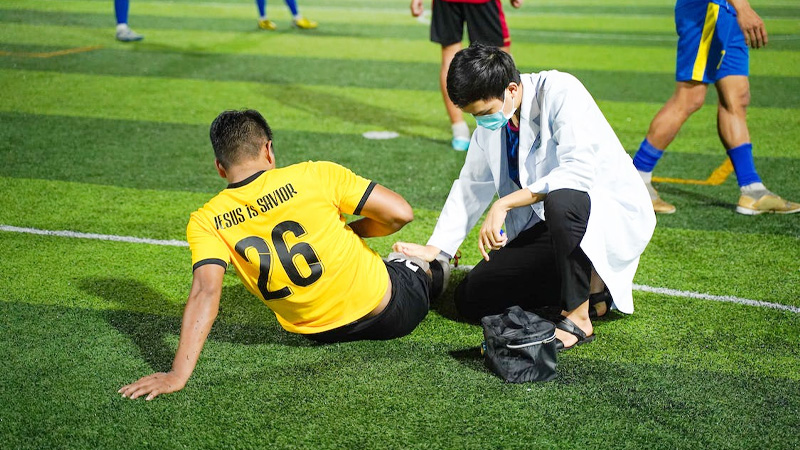Soccer, the world’s most beloved sport, brings joy, passion, and intense physical demands to the lives of players and fans alike. However, amid the excitement and camaraderie on the field, injuries can sometimes cast a shadow on the beautiful game.
From amateur enthusiasts to professional athletes, understanding the most common soccer injuries is crucial for players, coaches, and parents to ensure safer play and better injury management.
In this comprehensive guide, we will delve into five frequently asked questions about the most prevalent soccer injuries. So, stay alert till the end.
Most Common Soccer Injuries
Soccer, being a physically demanding sport, is not without its fair share of injuries. The most common soccer injuries are crucial for players, coaches, and medical professionals to implement preventive measures and ensure the players’ well-being.
Ankle Sprain
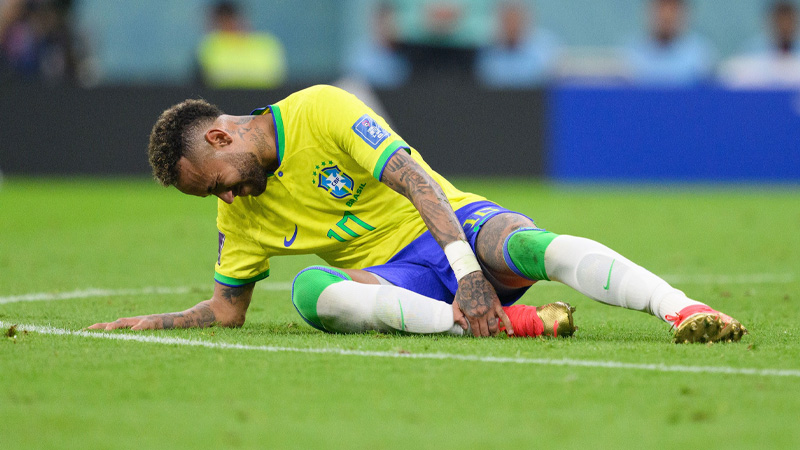
Source: cnn
An ankle sprain is one of the most frequent injuries in soccer, often occurring when a player lands awkwardly or experiences a sudden twisting motion of the ankle.
This can lead to the stretching or tearing of the ligaments that support the ankle joint. Symptoms include pain, swelling, bruising, and difficulty bearing weight on the affected ankle.
Proper treatment involves rest, ice, compression, and elevation (RICE), followed by physiotherapy and gradual return to play to prevent re-injury. Ankle taping or wearing supportive braces can also reduce the risk of sprains.
Groin Strain
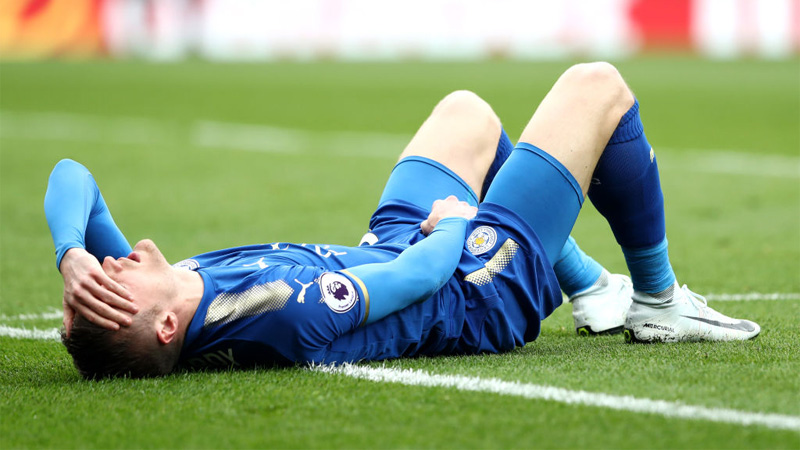
Source: ronaldo
The groin area, where the inner thigh muscles attach to the pelvis, is susceptible to strains in soccer due to the quick changes in direction and acceleration. Groin strains can vary in severity, from mild discomfort to severe tears.
Players often experience pain, tenderness, and limited range of motion in the groin region. Rest, ice, and anti-inflammatory medications are initial treatments.
Physiotherapy plays a vital role in the rehabilitation process, focusing on strengthening the hip and core muscles. Gradual return to play and proper warm-up exercises can minimize the risk of recurrence.
Hamstring Strain
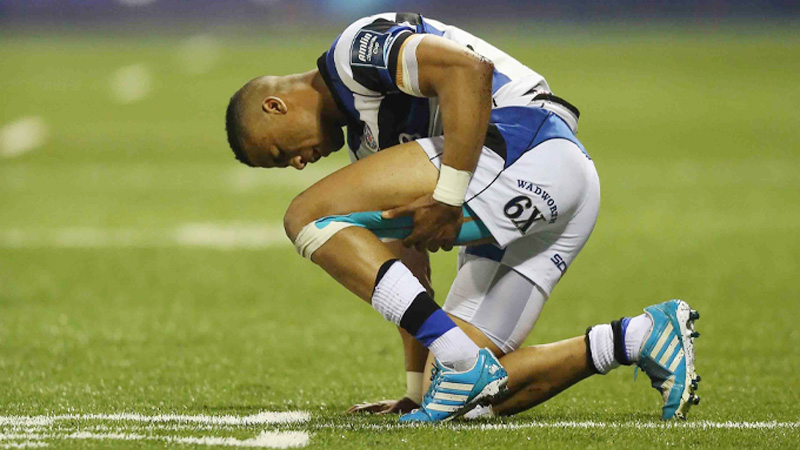
Source: coreadvantage
Hamstring strains occur when the muscles at the back of the thigh are overstretched or torn. Soccer players, especially those involved in sprinting or kicking, are prone to this injury. Hamstring strains can range from mild Grade 1 strains to severe Grade 3 tears.
Symptoms include sharp pain, tenderness, and difficulty walking or running. RICE therapy, along with gentle stretching and progressive strengthening exercises, forms the basis of treatment.
To prevent hamstring strains, players should engage in regular flexibility exercises, warm up adequately, and gradually increase the intensity of training.
Knee Ligament Injuries (ACL, MCL, PCL)
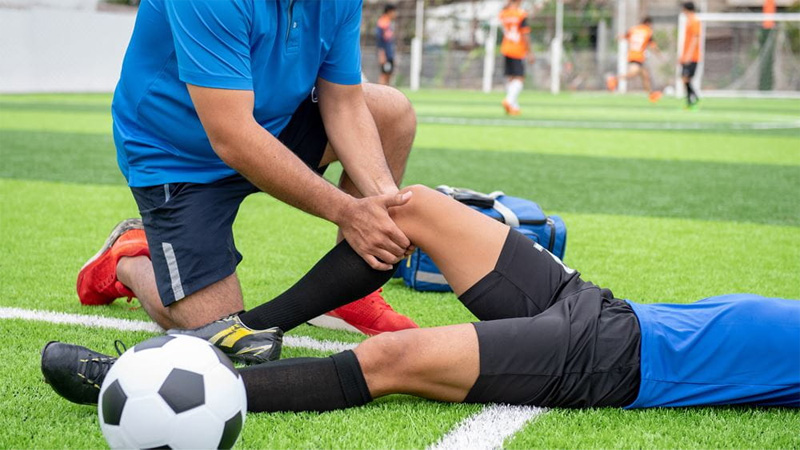
Source: intermountainhealthcare
The knee is one of the most complex and vulnerable joints in soccer. Ligament injuries, particularly to the anterior cruciate ligament (ACL), medial collateral ligament (MCL), and posterior cruciate ligament (PCL), are relatively common and often result from sudden stops, twists, or direct impact to the knee.
ACL tears, in particular, can be devastating and require surgical intervention in many cases. Players may experience pain, swelling, instability, and difficulty walking. Treatment depends on the severity and may include rest, bracing, physical therapy, and surgery for severe cases.
Preventive measures include neuromuscular training, focusing on balance, stability, and proper landing techniques to reduce the risk of knee ligament injuries.
Meniscus Tear

Source: goal
The meniscus is a C-shaped cartilage in the knee that acts as a cushion and shock absorber. Meniscus tears are usually caused by forceful twisting or hyperextension of the knee joint. Soccer players may experience pain, swelling, and limited range of motion.
Depending on the severity and location of the tear, treatment may involve conservative methods like rest, ice, and physical therapy or, in more severe cases, arthroscopic surgery to repair or remove the damaged meniscus.
Proper warm-up exercises, avoiding excessive pivoting or twisting motions, and maintaining strong leg muscles can help prevent meniscus tears.
Shin Splints
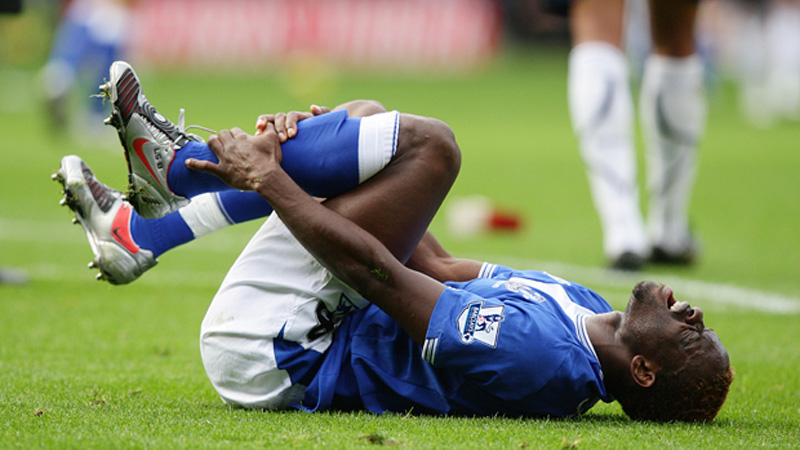
Source: fourfourtwo
Shin splints are a prevalent injury among soccer players, especially those engaged in repetitive running and jumping. The condition is characterized by pain and tenderness along the shinbone (tibia).
Overuse, improper footwear, and poor running mechanics are common contributing factors. The stress placed on the lower leg’s muscles and bones can lead to inflammation and microtears, causing discomfort and limiting players’ ability to perform optimally.
Prevention involves adequate warm-up, stretching, and strengthening exercises, while treatment includes rest, ice, and anti-inflammatory medications.
Achilles Tendonitis
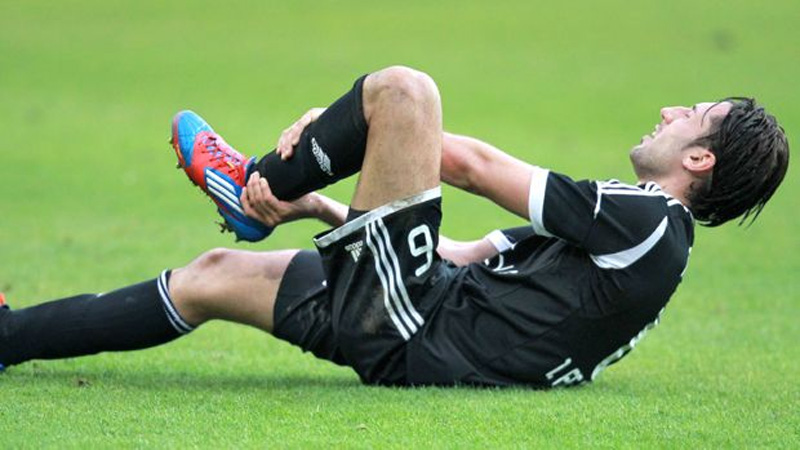
Source: fourfourtwo
The Achilles tendon, connecting the calf muscles to the heel bone, is vital for running, jumping, and kicking movements in soccer. Tendonitis occurs when the Achilles becomes inflamed due to overuse, improper footwear, or a sudden increase in training intensity.
Players may experience pain, swelling, and stiffness, impairing their performance and posing a risk for a rupture if not treated promptly.
Rest, physical therapy, and a gradual return to activity are essential for recovery. Proper footwear, stretching, and eccentric strengthening exercises can also help prevent this injury.
Concussion
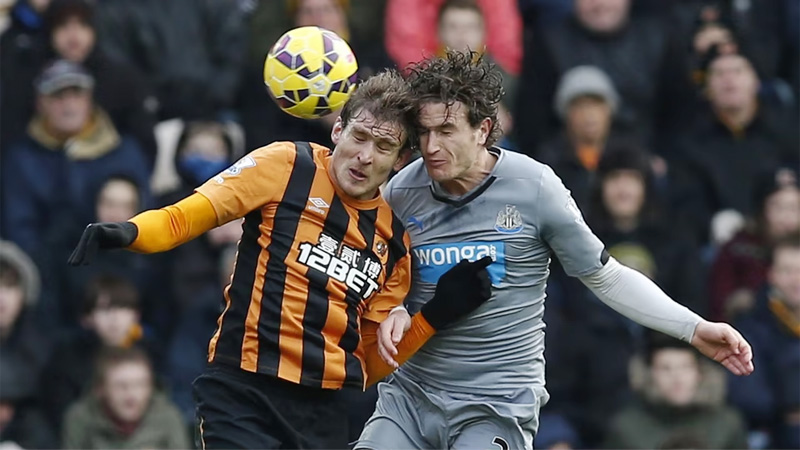
Source: theatlantic
Head injuries, particularly concussions, are a significant concern in soccer. Collisions with other players, headers, or falls can lead to concussions, which are mild traumatic brain injuries.
Symptoms may include headaches, dizziness, confusion, and sensitivity to light or noise. Players suspected of a concussion should be immediately removed from play and evaluated by a medical professional.
Rest and a gradual return to physical activity are crucial for recovery. Strict adherence to concussion protocols, education on proper heading technique, and the use of protective headgear can help reduce the risk of these injuries.
Fractured Bones
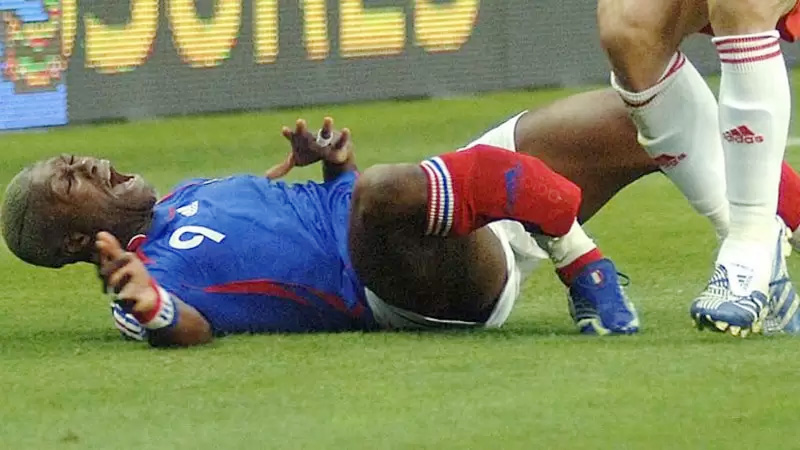
Source: sportmob
The physical nature of soccer makes players susceptible to fractures, particularly in the foot, leg, or arm. Impact with other players, awkward landings, or strong tackles can result in broken bones.
Fractures require immediate medical attention and immobilization to promote proper healing. Depending on the severity, players may need to undergo surgery and undergo rehabilitation to regain strength and mobility.
Dislocated Shoulder
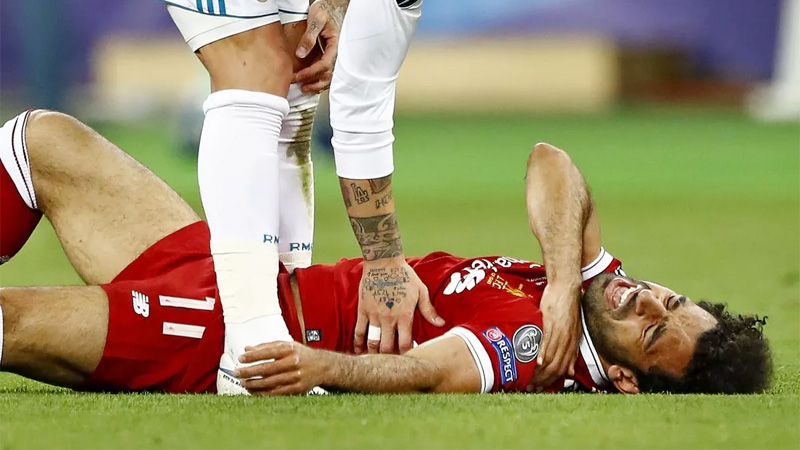
Source: mirror
While relatively less common than some other injuries, dislocated shoulders can occur in soccer, usually from falls or collisions. This injury involves the upper arm bone (humerus) popping out of the shoulder joint. It causes intense pain, swelling, and limited arm movement.
A medical professional should promptly relocate the shoulder, followed by rehabilitation to strengthen the joint and surrounding muscles. Protective taping and strengthening exercises can be employed to reduce the risk of recurrent dislocations.
Hip Flexor Strain

Source: allfootballapp
A hip flexor strain is a prevalent injury among soccer players, especially those involved in explosive movements and sudden changes in direction. The hip flexors are a group of muscles that allow for flexion and rotation of the hip joint, crucial for kicking, sprinting, and quick footwork on the field.
Overexertion or improper warm-up can lead to strained hip flexors, causing pain, tenderness, and reduced mobility. Recovery often requires rest, ice, and gentle stretching to alleviate tension and aid in healing.
Proper conditioning, including dynamic warm-ups and targeted strength exercises, can help prevent such injuries, ensuring players maintain their flexibility and strength throughout the season.
Lower Back Pain
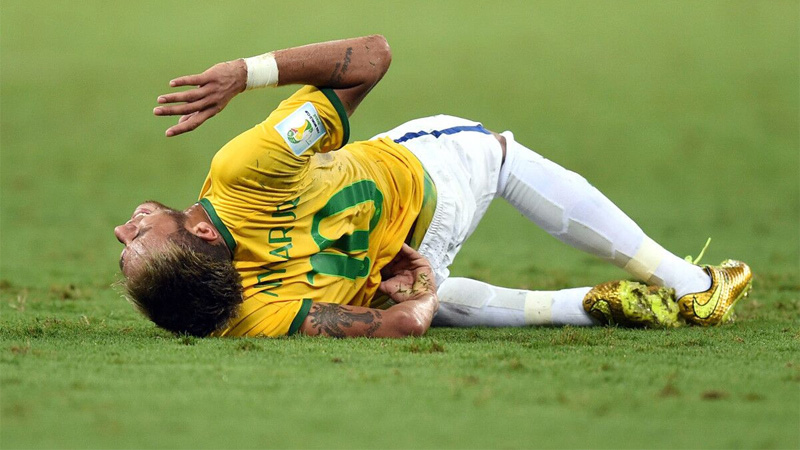
Source: latimes
Lower back pain is a common complaint among soccer players due to the sport’s demanding physical nature. Running, jumping, and sudden movements can strain the muscles and ligaments supporting the lower back. Poor posture, inadequate core strength, and improper lifting techniques can exacerbate the problem.
Soccer athletes experiencing lower back pain may find it challenging to perform optimally and may risk more severe injuries if left untreated. Rest, physical therapy, and exercises to strengthen the core and back muscles are typical treatment approaches.
Additionally, maintaining proper form during play, incorporating core-strengthening exercises into regular training, and adopting good posture habits off the field can significantly reduce the risk of lower back pain and help players maintain peak performance.
Plantar Fasciitis
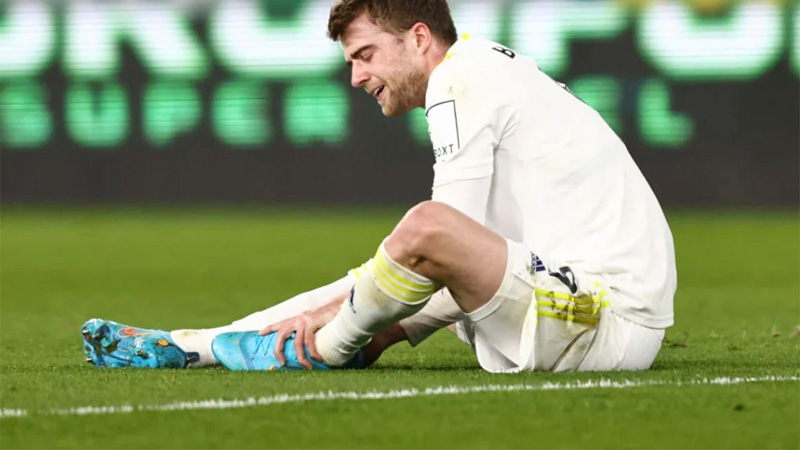
Source: footballinsider247
Plantar fasciitis is a painful condition affecting the plantar fascia, a thick band of tissue that runs along the bottom of the foot. Soccer players are prone to this injury due to repetitive pounding on hard surfaces, improper footwear, and inadequate foot support.
The condition typically presents as intense heel pain, especially after periods of rest or early in the morning. Treating plantar fasciitis often involves a combination of rest, ice, stretching exercises, and supportive footwear.
In severe cases, physical therapy or custom orthotics may be recommended. Preventative measures include wearing well-fitted, supportive shoes, incorporating foot-strengthening exercises into training routines, and avoiding excessive strain on the feet during play.
Quad Strain
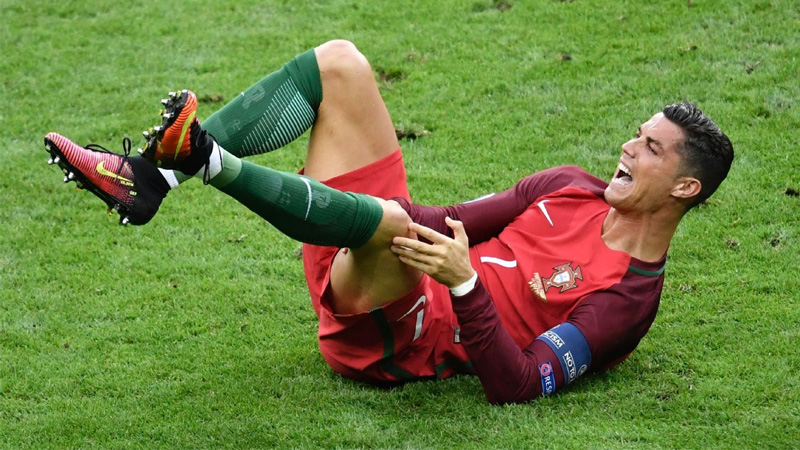
Source: espn
The quadriceps, a group of powerful muscles in the front of the thigh, play a crucial role in soccer, powering movements like kicking and sprinting. However, the intense strain placed on the quads can lead to a quad strain, a prevalent injury in the sport.
Players may experience sudden pain, swelling, and difficulty moving the affected leg. Rest, ice, compression, and elevation (RICE) are initial treatment steps to reduce inflammation and aid recovery.
Rehabilitation typically involves gentle stretching and strengthening exercises under the guidance of a physiotherapist. Preventing quad strains involves proper warm-up, gradual intensity progression during training, and ensuring adequate rest and recovery between intense workouts.
Sports Hernia
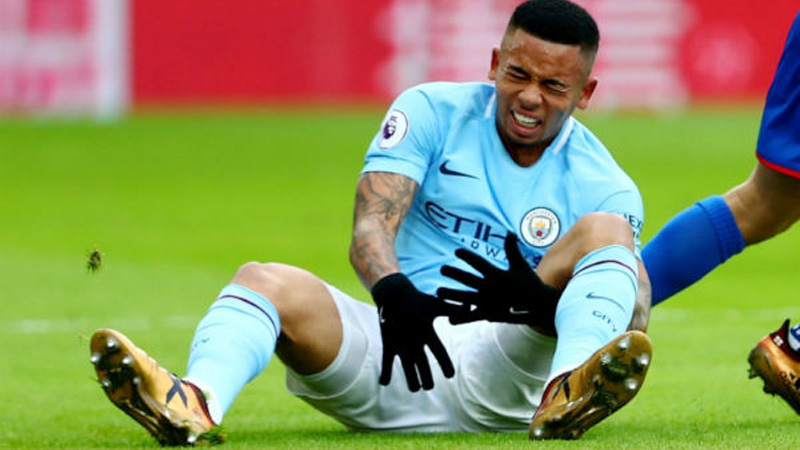
Source: physiqz
Sports hernia, also known as athletic ‘pubalgia’, is a complex and often misunderstood injury common among soccer players. It involves a tear or strain in the muscles or tendons of the lower abdominal and groin region.
Soccer players are at risk due to the repetitive twisting and turning motions involved in the game. Symptoms include groin pain that worsens with activity and improves with rest.
Diagnosing sports hernia can be challenging, and treatment often involves rest, physical therapy, and anti-inflammatory medication. In severe cases, surgery may be necessary.
To reduce the risk of sports hernia, players should focus on core-strengthening exercises, maintain proper form during play, and avoid overexertion. Early intervention and proper management are crucial to ensure a safe return to the field without risking further damage.
Tips to Avoid Common Soccer Injuries
Playing soccer is a physically demanding sport that requires agility, speed, and coordination.
While injuries can occur in any sport, there are several preventive measures players can take to reduce the risk of common soccer injuries. Here are some valuable tips to stay injury-free on the soccer field:
Proper Warm-up and Stretching
Always start with a thorough warm-up before every training session and match. Gentle cardiovascular exercises and dynamic stretches help increase blood flow to muscles, making them more flexible and less prone to injury.
Strengthening Exercises
Focus on strengthening your muscles, especially the core, legs, and hips. Strong muscles provide better support to joints and help prevent strains and sprains.
Correct Technique
Work with coaches or trainers to develop proper soccer techniques for kicking, running, and changing directions. Using the right form reduces the risk of overuse injuries and improves performance.
Conditioning and Fitness
Maintain a consistent fitness routine to improve endurance and overall conditioning. Soccer demands high levels of cardiovascular fitness, and being in good shape can minimize fatigue-related injuries.
Wear Appropriate Gear
Invest in high-quality soccer shoes that fit well and provide adequate support for your foot type. Additionally, wear shin guards to protect against impact injuries and follow your league’s guidelines for appropriate safety gear.
Rest and Recovery
Listen to your body and prioritize rest and recovery. Adequate sleep and downtime between intense training sessions allow your muscles and ligaments to heal and reduce the risk of overuse injuries.
Hydration
Stay hydrated before, during, and after games and practices. Dehydration can lead to muscle cramps and fatigue, increasing the risk of injuries.
By adopting some of these preventive measures and maintaining a cautious approach, you can enjoy the beautiful game of soccer while minimizing the risk of common injuries.
FAQs
What is a hip flexor strain, and how does it occur?
Hip flexor strains are a frequent occurrence among soccer players due to the sport’s dynamic movements. Learn about the essential hip flexor muscles, the causes of strain, and effective strategies for prevention and rehabilitation.
How does lower back pain impact soccer players, and how can it be managed?
Lower back pain can hamper a player’s performance and lead to more severe injuries if not addressed promptly. Discover the common causes of lower back pain in soccer, along with preventive exercises and treatment options.
What is plantar fasciitis, and how can it be treated and prevented?
Plantar fasciitis, a painful foot condition, can disrupt a player’s agility and mobility on the field. Find out how to recognize this injury, explore effective treatments, and learn about preventive measures to keep your feet in top shape.
How can soccer players avoid quad strains and recover from them?
The powerful quadriceps are essential for soccer movements, but they are susceptible to strains. Explore the symptoms, rehabilitation techniques, and tips to prevent quad strains, helping players maintain peak performance.
What is a sports hernia, and how can it be managed effectively?
Sports hernia, often misunderstood, can sideline soccer players for extended periods. Unravel the complexities of this injury, grasp its treatment approaches, and gain insights into reducing the risk of a sports hernia.
Bottom Line
As soccer enthusiasts, athletes, coaches, or parents involved in the game, recognizing the most common soccer injuries and understanding how to handle them is crucial for ensuring the safety and well-being of players.
By familiarizing ourselves with the causes, symptoms, prevention, and treatment of hip flexor strains, lower back pain, plantar fasciitis, quad strains, and sports hernia, we can create a culture of informed and responsible play.
Let this comprehensive guide serve as a valuable resource to protect against injuries, allowing soccer enthusiasts to continue experiencing the joy and thrill of the beautiful game for years to come. Best wishes.

